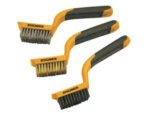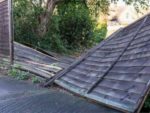Settlement cracks, shrinkage cracks, subsidence, ground shrinkage, foundation cracks, render cracks, plaster cracks, wall cracks, ceiling crack and floor cracks; some or all play a part in home ownership and the general maintenace of your home.
Some of these can be pretty expensive. Subsidence of course usually means underpinning or mini-piling through the floor slab but plaster cracks can simply be part of the process of a wall drying out.
The important thing is that you can tell the difference between what needs addressing immediately and what can wait.

Cracks in brickwork are usually the sign of something else moving
Cracks in brickwork and blockwork can often be stitched back together but the cracks are always the effect of something else so it is important to get to the cause of the problem first.
In our pages we will show you how to measure cracks to see if they are getting bigger and how big they need to be before you call in the experts.
There are several ways to mend or repair what are called settlement cracks. In some cases, to effect a good repair it is necessary to make the crack larger before filling it. This allows you to get a suitable amount of filler in to ensure it will not just fall out and reopen the crack. Similarly it’s important to check that the material you are filling is stuck to the substrate firmly before you fill the crack. If the wall, or its surface covering is still moving, the crack will just reappear.



